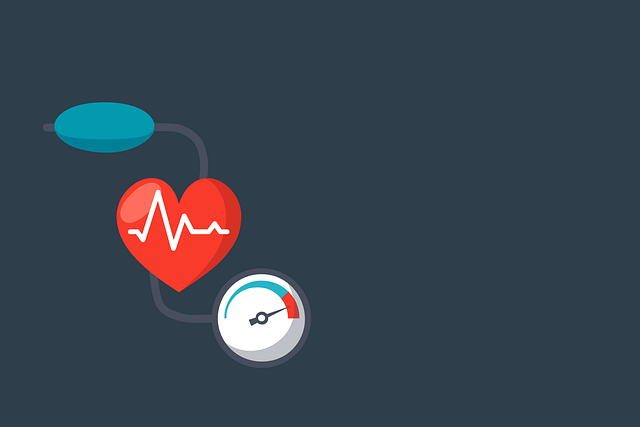Blood pressure is the force that carries blood throughout our bodies.1
It is made up of two different numbers and presented as a fraction.1 The top number is known as systolic pressure and the bottom number is known as diastolic pressure.1
Normal blood pressure
Normal blood pressure is defined as having a systolic blood pressure under 120 and a diastolic blood pressure under 80, which is written as “120/80” and spoken as “120 over 80”.1
The systolic reading represents the maximum blood pressure that occurs when the heart contracts and pumps blood through the body.1 The diastolic reading indicates the pressure just before the heart contracts and when it is resting.1
Both numbers are recorded using a unit of pressure known as “millimeters of mercury” or “mmHg”.1
Since blood pressure is what keeps our organs alive and active, it is critical to keep the systolic and diastolic measurements within normal limits of around 120/80.1
To detect changes, the standard blood pressure cuff may be used at home, but can smart devices like Fitbit also measure blood pressure?
The new blood pressure monitoring study led by Fitbit Labs
Traditionally, blood pressure is measured using a blood pressure cuff which requires sitting still and correct placement of the cuff around the upper arm.1
Accurately measuring blood pressure
In critically ill patients or ambulatory settings, blood pressure may be more accurately measured using invasive methods such as inserting a small tube into an artery.1,2
However, for a relatively healthy person who may not have a blood pressure cuff at home, it may be difficult to keep track of blood pressure.
This is where a new study focused on monitoring changes in blood pressure, led by Fitbit Labs, comes in.3
Can Fitbit measure blood pressure?
Since Fitbit’s own study was just launched in April 2022, there are no results available yet.
However, the Fitbit devices will estimate blood pressure using pulse arrival time, which does have some available data.
Pulse arrival time
Pulse arrival time is the amount of time it takes for a pulse of blood to travel from the heart to a distant area like the wrist where a Fitbit watch might be resting.4
Although this is believed to be a non-invasive means of measuring blood pressure, research remains inconclusive with regard to how well pulse arrival time can estimate blood pressure.2,4
A study published in 2019 found that pulse arrival time is not an accurate indicator of blood pressure.4
What the study said
While other studies have similarly concluded that there is a weak relationship between pulse arrival time and blood pressure, research published in 2020 found that pulse arrival time can detect changes in blood pressure up to 2 minutes earlier than other non-invasive devices such as using a finger cuff.5,6
The Fitbit – which relies on the pulse arrival time – may therefore be a non-invasive means of measuring blood pressure.
However, further studies are necessary to determine the accuracy and usefulness of Fitbits with blood pressure monitoring capabilities.
In addition to blood pressure, Fitbits with electrocardiogram (ECG) features are also available. An ECG is a test that measures the electrical activity of the heart.4
By downloading the ECG application on a Fitbit, users can assess their heart health after a 30-second reading.7
Importance of monitoring blood pressure
Keeping blood pressure in check is necessary for ensuring that all organs throughout the body are receiving enough oxygen from the blood.1 If blood pressure drops too low, it is medically referred to as hypotension.
Reduced blood flow to the kidneys, for example, is associated with renal failure.1
If blood pressure rises beyond 140/90 mmHg, it is referred to as hypertension.8
High blood pressure is one of the leading risk factors for death around the world as it is associated with an increased incidence of heart attack, stroke, and renal failure.1
Fitbits and blood pressure: Final thoughts
So, can Fitbit measure blood pressure?
The newly launched study by Fitbit Labs may provide a clearer answer, however, existing research suggests that it might.
If pulse arrival time can correctly estimate blood pressure, this would have profound implications for those suffering from conditions that require continuous detection.
Ultimately, using a wearable device such as the Fitbit would allow for a non-invasive and relatively easy way to closely monitor blood pressure – if it turns out to be an accurate way to do so.
References
1. Brzenzinski W. Blood Pressure; Clinical Methods – The History, Physical and Laboratory Examinations. Clin Methods, 3rd Ed. 1990:95-97. http://www.ncbi.nlm.nih.gov/books/NBK201/#_ncbi_dlg_citbx_NBK201.
2. Finnegan E, Davidson S, Harford M, et al. Pulse arrival time as a surrogate of blood pressure. Sci Rep. 2021;11(1):1-21. doi:10.1038/s41598-021-01358-4
3. Fitbit. New Fitbit Labs Study: Can Measuring Pulse Arrival Time at the Wrist Track Blood Pressure? – Fitbit Blog. https://blog.fitbit.com/fitbit-study-blood-pressure/. Accessed May 12, 2022.
4. Liang Y, Abbott D, Howard N, Lim K, Ward R, Elgendi M. How Effective is Pulse Arrival time for Evaluating Blood Pressure? Challenges and Recommendations from a study using the MIMIC Database. J Clin Med. 2019;8(3). doi:10.3390/jcm8030337
5. Escobar-Restrepo B, Torres-Villa R, Kyriacou PA, et al. Evaluation of the linear relationship between pulse arrival time and blood pressure in ICU patients: Potential and limitations. Front Physiol. 2018;9(December):1-9. doi:10.3389/fphys.2018.01848
6. Park YS, Kim SH, Lee YS, Choi SH, Ku SW, Hwang GS. Real-time monitoring of blood pressure using digitalized pulse arrival time calculation technology for prompt detection of sudden hypertensive episodes during laryngeal microsurgery: Retrospective observational study. J Med Internet Res. 2020;22(5):1-12. doi:10.2196/13156
7. Fitbit. Irregular Rhythm. https://www.fitbit.com/global/us/technology/irregular-rhythm. Accessed May 15, 2022.
8. DeGuire J, Clarke J, Rouleau K, Roy J, Bushnik T. Blood pressure and hypertension. Heal Reports. 2019;30(2):14-21. doi:10.25318/82-003-x201900200002
Image by Elf-Moondance from Pixabay



